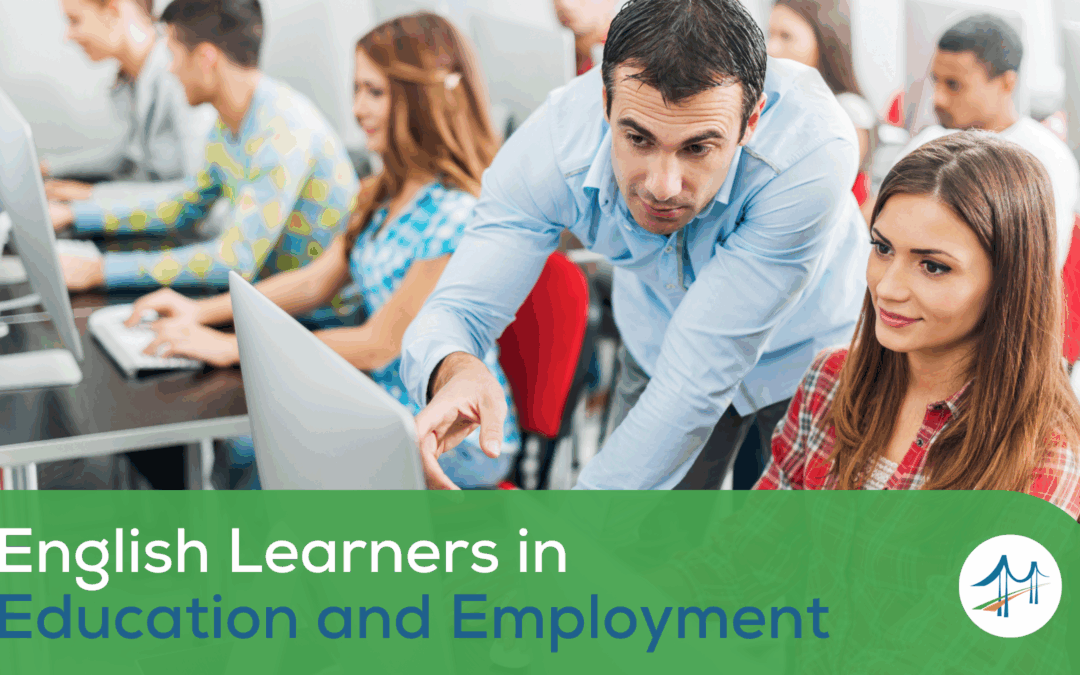Across the United States, 5 million students are learning English through participation in language learning programs, and the number of multilingual learners has increased by at least 60% over the last decade, according to a Brookings Institution report. English Language Learners (ELL) are the fastest-growing population group in U.S. public schools, with over 75% of learners belonging to the Hispanic or Latino community as of 2014-2015. National and state policies must be updated, and community outreach must be promoted to ensure this community meets its educational development needs.
It is important to note that the category of ELL only refers to students still learning the language and does not include those who have already reached English proficiency. Including former and current ELL program participants, these students more than double the proportion of public-school students whose first language is not English.
Compared to states considered traditional immigrant destinations, Maryland has a larger student population enrolled in language assistance programs–approximately 10.8% of the state’s student population, 70% of which are Spanish speakers. This number of Hispanic students will significantly affect Maryland’s workforce within the upcoming years.
Established in the fall of 2021, the Community Workgroup on ELL, a grassroots coalition formed to monitor and provide input to improve the Maryland State Department of Education’s current policies regarding English Language Learners. The alliance comprises multilingual students and parents, ESOL (English for Speakers of Other Languages) enrollees, Spanish teachers, and immigration and education justice advocates.
While the coalition has faced challenges disparaging to the Latin community, such as struggling for timely access to information from MSDE, they have already made significant strides in their efforts to give proper representation to ELLs. They have made a public survey available in six languages to distribute to Maryland constituents most directly impacted by these policies. Community Workgroup on ELLs will use this data to develop a community response to the interim report from the Workgroup on English Language Learners in Public Schools, created by the Blueprint for Maryland’s Future.
So far, the Community Workgroup on ELLs has established the following recommendations for reform:
- Steps for improving outcomes for teen immigrant students
- Rubric for measurably improving school system communication with parents and communities who speak little or no English (particularly urgent given the COVID-19 pandemic)
- Specific actions to increase student voice and agency in policy decision-making
- A timetable for addressing the over-diagnosis and under-resourcing of neurodiverse emergent multilingual students
The coalition advocates inclusion in future workgroup meetings and calls for transparency and accountability from MSDE, which has since expressed willingness to work with the coalition and has also added a feedback form to their website.
In Maryland, as in other states, the ELL population is growing faster than the national average. As of the 2021-2022 school year, the U.S. Education Department reported a shortage of ESL teachers in all grade levels (pre-K-12) in Maryland and D.C. This leads to a dire need for improvised recruiting and workforce development strategies in this sector. To meet this growing demand for ESOL teachers, a Towson University College of Education program named ELEVATE was recently granted $2.7 million by the U.S. Department of Education to train teachers in schools with high numbers of ELL, many of which are Hispanic students. Some of these schools utilize a method now recommended by researchers in which ESOL specialists collaborate with classroom teachers to integrate learning for ELLs, as opposed to pulling them out of their regularly scheduled classes for separate English learning.
Grassroots efforts from coalitions like the Community Workgroup on ELLs are essential to ensuring that the voices of immigrant students are heard, their needs are met through expanding programs, and that teachers receive proper training to support the educational needs of ELLs effectively, thus improving access to quality education for all.
Source: Computer class. by skynesher from Getty Images Signature


